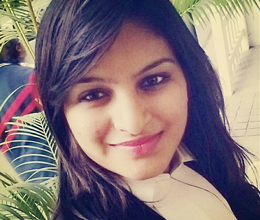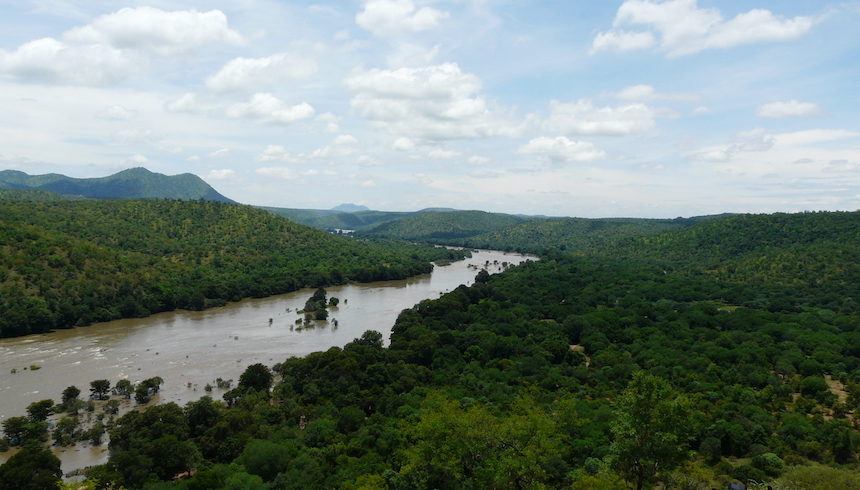Brief on Cauvery Dispute as of now:
On September 6, 2016, Supreme Court ordered Karnataka to release 15,000 cusecs of water for 10 days.
However, Karnataka is facing almost 40% deficit in the water stored in the dams. The water available is just enough to meet the drinking water requirements in Bangalore, Mysore and surrounding cities. Very small amount of this water is being allocated to farmers.
Under such critical circumstances that Karnataka has faced for the first time in a very long time, one wonders how Karnataka is expected to release water for Tamil Nadu’s irrigation purpose.
On appeal, the government failed to convince the court. In fact, court was unhappy with the state’s contention that the court’s decision has led to wide spread violence in the state.
Instead, the Hon’ble Supreme Court ordered that it is the State’s responsibility to assure that Supreme Court’s order is followed. The bench said “Agitation in spontaneity or propelled by some motivation or galvanised by any kind of catalytic component, can never form the foundation for seeking modification of an order. it is the obligation of the executive to see that the order is complied with in letter and spirit.”
Moreover, Karnataka Government is being blamed for the decision as the affidavit filed by the Government, it agreed to release 10,000 cusecs of water from September 7th to 12th. Therefore, giving an impression to the court that the State has excess water to spare.
Therefore, Karnataka was directed to release 12,000 cusecs of water till 20th of September.
Supervisory Committee and Supreme Court Order:
The Cauvery Supervisory Committee on 19th September 2016 directed Karnataka to release 3000 cusecs of water per day from September 21st to 30th, sparking fresh protests in Mandya and the outskirts of Karnataka.
Refusing to pay attention to Karnataka’s plea that releasing any more water to the State of Tamil Nadu would plunge them into a water crisis, the Supreme Court of India directed the State of Karnataka to release 6000 cusecs of water per day from September 21 to 27. The court also asked the Centre to constitute the Cauvery Management Board, an expert resolution body within 4 weeks.
However, Karnataka decided in the Cabinet meeting to defer the release off water to Tamil Nadu until a decision is reached in the special session of Legislative Assembly on 23rd September, 2016. Former Minister Veerappa Moily said ‘What is contempt of court, when we are dying.’
A day long special session of the legislature was held on 23rd September with the permission of Governor, Vajubhai Vala in order to pass a resolution against the release of Cauvery water to Tamil Nadu.
Today, on 26th September, 2016, the State Government approached the Supreme Court for the modification of the order in the of the resolution passed by the legislature. Karnataka Government told Supreme Court that it cannot release water till December as usually from June to September, there is a shortfall in release after which, Tamil Nadu receives rainfall in October due to North-east monsoon. Therefore, Karnataka shall release water in December after studying the quantum of water required after the rainfall.
Karnataka cited various reasons as to its inability to release water including shortage of water for drinking water purposes in cities like Bangalore, Mysore and neighbouring cities. The Supreme Court shall hear the case tomorrow.
History of the Cauvery River Dispute between Karnataka and Tamil Nadu:
Cauvery river is one reason why Karnataka and Tamil Nadu have been at loggerheads with each other periodically since 124 years. The Cauvery war has almost been cyclical leaving both states high on emotions, though with no permanent solution each time.
Agreements of 1892 and 1924:
The agreements of 1892 and 1924 are important as they relate to the interstate rivers and how the water must be allocated amongst the states.
1892 Agreement is a general agreement relating to various interstate rivers and small streams.
Whereas, the 1924 agreement was framed and agreed by the Mysore and Madras Governments. The basic tenet of both agreements is that no injury must be caused to the existing irrigation downstream during construction in the upstream.
Prior permission of the states downstream must be taken while constructing anything upstream, there has to be fair and equal utilization of water and development of ayacuts in both states must be parallel in order to achieve the objective of fair utilization.
Therefore, Karnataka was allowed to construct Krishnarajasagar and in return Madras State was allowed to construct Mettur Dam.
The above agreements were said to be violated when Government of Tamil Nadu alleged that the executive action of the Mysore Government in constructing Kabini, Hemavathi, Harangi Swarnavathi and other projects and expanding ayacut (irrigation projects such as canal, dam or tank) has diminished the supply of water to Tamil Nadu and is in violation of the agreements of 1892 and 1924.
As per the allegations, the Central Government and the Central Water Commission had not cleared these projects either. Also, Tamil Nadu Government was not approached for prior consent.
Negotiation Process from 1970-1990
Hence, Tamil Nadu’s first call for adjudication was in the year 1969, when they wrote a letter to Government of India to declare to the State of Mysore that constructions that are against interstate agreements must be carried out on their own risk. However, the Government of India did not act upon the letter in time.
Further, in 1970, in a special conference convened by the Union Irrigation Minister, Mysore refused to bow down to Tamil Nadu’s demands. Five such meetings were held in vain in 1970.
After which, the State of Tamil Nadu wrote a letter to the Prime Minister of India for adjudicating the matter through a tribunal. The letter was dated 04/08/1970.
A letter was again written in October after fresh talks between the states failed. The then Prime Minister , Indira Gandhi in her reply deemed it fair to not take any action as the State of Mysore was then under President’s Rule.
Therefore, Tamil Nadu approached the Supreme Court with a petition, which was later withdrawn on the advice and assurance of the Prime Minster of India.
Establishment of Cauvery Fact Finding Committee, 1972:
Subsequently, Cauvery Fact-finding Committee was set in 1972 to know the details on the yield and utilization of water in Cauvery Basin. The inter-state agreements were amended a little as per the report of the Committee.
Yet, Chief Ministers of the two states met 13 times since 1973 in order to negotiate. Pondicherry was inducted in the negotiation process in 1978.
However, Tamil Nadu found no benefit in the draft negotiation put forth by the Government of India. It therefore, requested the Government to refer the dispute to a Tribunal.
However, bilateral talks between the two states were held upto the year 1983-84 with no amicable outcome.
Establishment of Cauvery Water Disputes Tribunal:
Government of India received a request from the Government of Tamil Nadu under Section 3 of Inter-State Water Disputes Act, 1956 regarding inter-State river, Cauvery to direct the matter to a tribunal.
Central Government exercised its power conferred by Section 4 of the inter-State Water Disputes Act, 1956 and constituted ‘Cauvery Water Disputes Tribunal’ vide notification dated 2nd June, 1990.
The tribunal has its headquarters at New Delhi. It consists of a Chairman and two members nominated by the Chief Justice of India.
Therefore, a letter dated 6th July, 1986 was referred by the Central Government to the Tribunal. The letter was from the Government of Tamil Nadu referring to the Cauvery Dispute and the breach of Madras-Mysore Agreements of 1892 ad 1924.
Final Award of the Tribunal, 2007:
In the final award, definition of normal year, water year and irrigation was settled. These were some of the main points of contention between the two states.
The Tribunal held that in a normal year, Karnataka has to release to Tamil Nadu 192 TMC ft. monthly. During distress year, this will be reduced proportionately among all States that is Karnataka, Tami Nadu, Kerala and Pondicherry.
The award authorized the Board/Authority to monitor the monthly releases with the help of all states and Central Water Commission for five years after which modification can be worked out if needed by consultation among all party –states.
As per the Tribunal order the total catchment in the Cauvery basin with 50% dependability on monsoon is 740 TMC ft. annually.
It allocated this to the states as follows:
419 TMC ft. to Tamil Nadu
270 TMC ft. to Karnataka
30 TMC ft. to Kerala and
7 TMC ft. to Pondicherry.
Karnataka was directed to release 192 TMC ft. annually to Tamil Nadu. Therefore, Karnataka gets a total of 462 TMC ft. of water out of which, it has to release 192 TMC ft.
Tamil Nadu generates 227 TMC ft. of water and get 192 TMC ft. from Karnataka making the total 419 TMC ft.
According to this calculation, Karnataka seemed to be on a losing side. However, both governments had challenged the Tribunal’s decision in the Supreme Court.
Post Tribunal’s Order:
Further, in 2013 Cauvery River Authority had its seventh meeting in which Prime Minister Manmohan Singh directed Karnataka to release 9000 cusecs of water.
Both Jayalalitha and then Karnataka CM, Jagadish Shettar termed the direction unacceptable.
The Tribunal’s award mandated the Central Government to constitute Cauvery Management Board.
Accordingly, the Tamil Nadu government moved the Supreme Court to direct the water ministry to constitute the water board. It had also asked for damages worth Rs. 2480 crores from the Karnataka Government for not following the Tribunal’s order.
There were wide spread protests after the Tribunal decision as Karnataka was asked to allocate 134 TMC ft. from June-September every year. However, Karnataka had poor rainfall during monsoon especially in the years 2002, 2003, 2012 and in 2016.
These years are technically distress years and since there is no quantum decided for distress years, it has been a bone of contention between the states for years.
Also, it is said that while Karnataka has been suffering due to low rainfalls, Tamil Nadu on the other side has plenty of ground water resources.
Accordingly, in 2013 Cauvery Supervisory Committee also held that the Tamil Nadu government’s demand for release of water is not feasible.
Therefore, Tamil Nadu approached the Supreme Court citing the meetings in the Supervisory Committee a futile exercise.
Conclusion:
It is unfair to expect a State to release water when it faces shortage of drinking water at a time when monsoon is almost over and yet the basin has not received enough rainfall. Ground reality and scientific data such as the amount water available in the catchment area must be taken into consideration.
It must be noted that Tamil Nadu still has monsoon to look forward. Also the storage facility in Tamil Nadu is poor. It must take initiative to build more dams, reservoirs etc. For instance, last year, due to Tamil Nadu’s insufficient storage capacity, excess water had to be released into the sea. Therefore, watershed management must also be focused upon.
Moreover, states need to become technically smart. the decision has to be scientific rather than emotional. For example, Tamil Nadu must make use of the sea water, desalinate in order to take benefit out of it.
Latest Developments:
The Karnataka state’s decision to defer the Supreme Court’s order to release 6000 cusecs of water had brought forth a constitutional crisis that no State has seen before.
However, on 3rd October, 2016 both houses of the Karnataka Legislature modified the resolution to release water to meet its drinking water purpose and to save the withering crops. The government planned to release 6000 cusecs of water from Monday for six days in order to avoid Supreme Court’s fury.
Also, the Court had asked the Centre to constitute Cauvery Management Board by 4th of October which the Centre initially accepted. However, Centre said on October 3rd that it cannot constitute the Board as it needs an authorisation from the Parliament. On being asked why it did not bring this up in the first place, Centre said ‘it was a mistake.’
The Centre suggested that the Secretary of the Union Water Resources Ministry set up a high power technical team. It must have C.S.Jha, Chairman of the Central Water Commission and other such members in its team. The team would study the cauvery basin and submit a report to the Supreme Court in 30 days.
Picture Courtesy: Wikimedia








There's 1 Comment